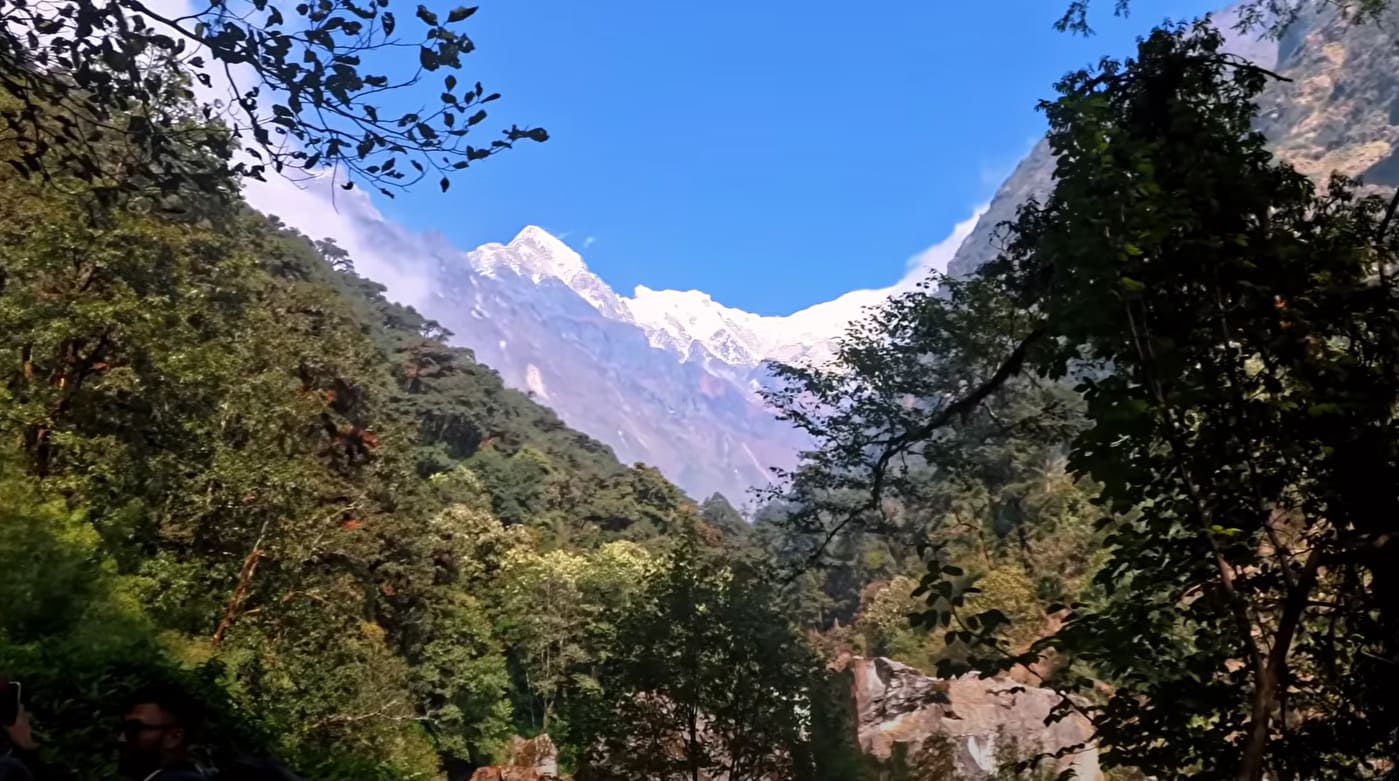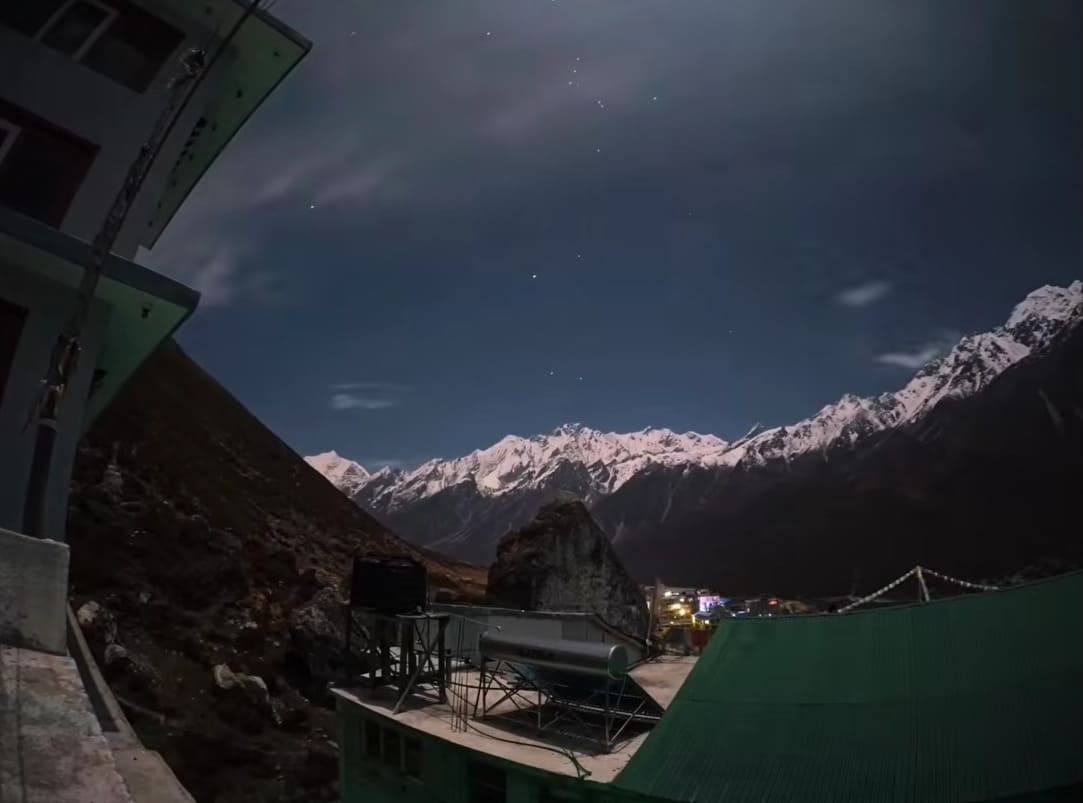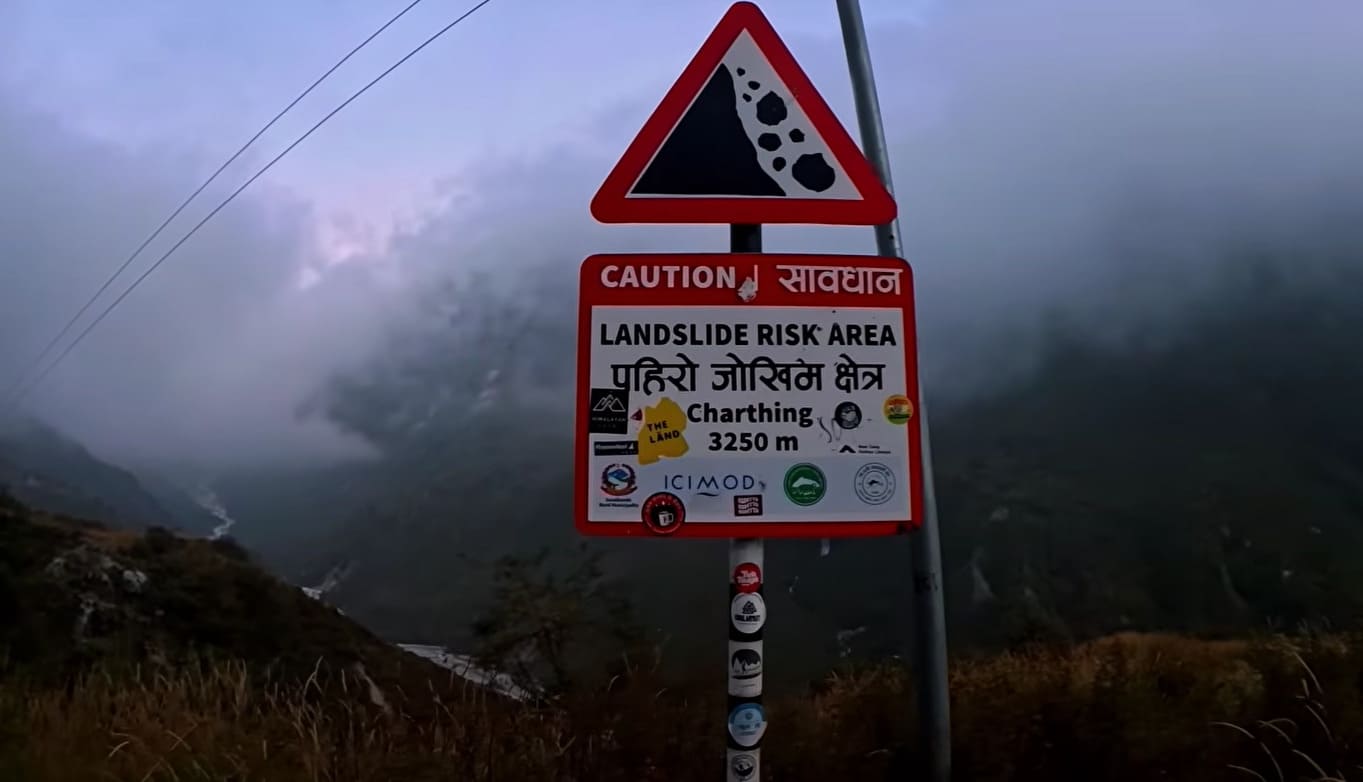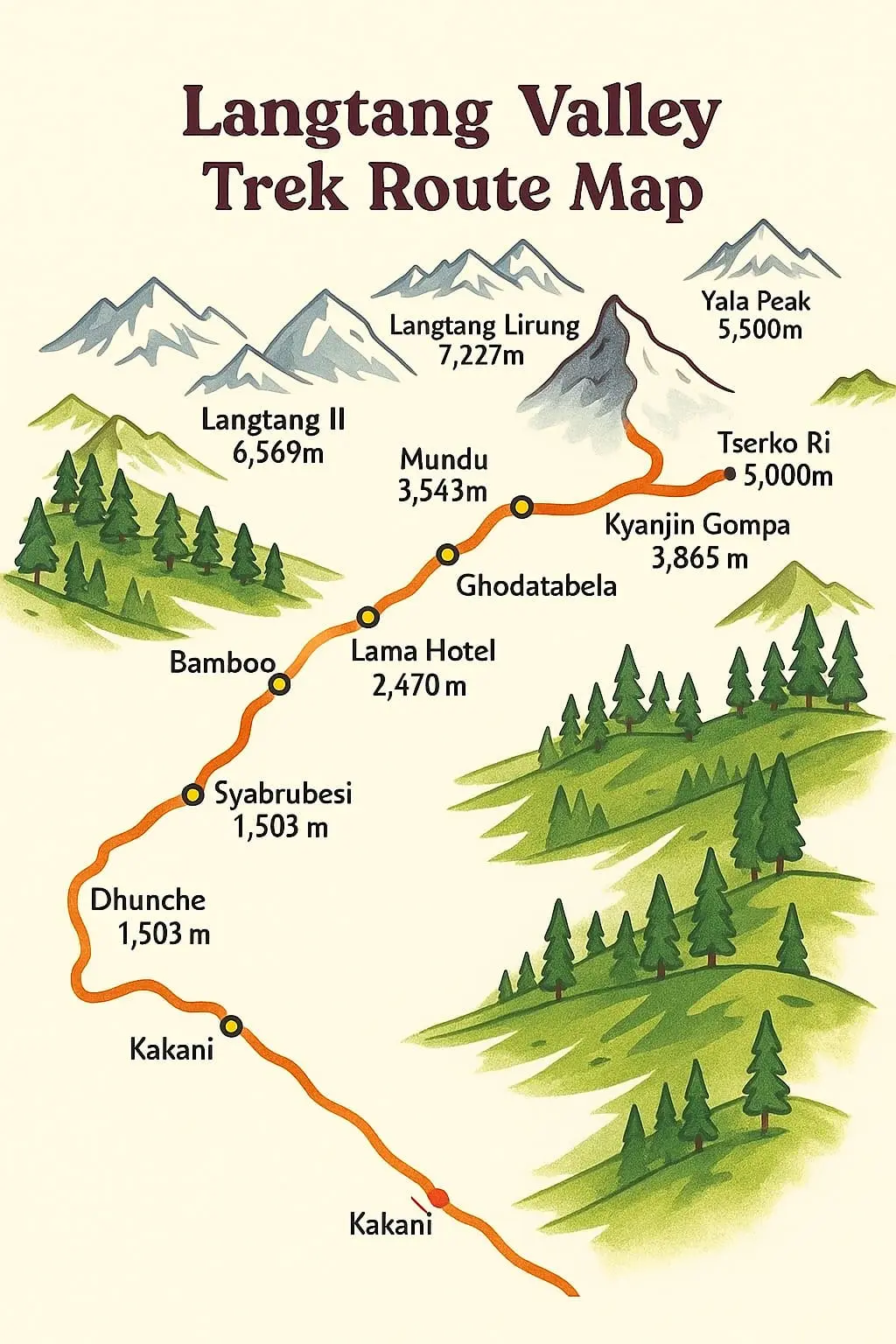Starting from Syabrubesi, the gateway to the Langtang region, the trail winds its way through rhododendron forests, terraced fields, and small villages like Lama Hotel and Langtang Village. Trekkers are treated along the way to close-up sights of the Langtang Lirung (7,227m) and other towering peaks, and serene alpine landscapes. The trek also offers a glimpse into the lifestyle of the Tamang and Sherpa communities, their monasteries, traditional homes, and festivals.
A highlight of the trek is reaching Kyanjin Gompa, a peaceful village at 3,870 meters, where trekkers can explore centuries-old monasteries, cheese-making traditions, and enjoy panoramic mountain vistas. The Langtang Valley Trek is as much a feast for the eyes as it is a journey into the heart of Himalayan culture, thereby making it an unforgettable experience for nature lovers, photographers, and adventure seekers alike.
The trek can be completed in 10 days, making it an excellent option for tourists who want a shorter but culturally rewarding Himalayan trek. The combination of nature, culture, and moderate level of difficulty has made the Langtang Valley Trek an excellent option for a true Nepal trekking experience.
Why Trek in Langtang Valley?
Close to Kathmandu, Langtang Valley is easily reached, just a short few hours' drive from the capital of Nepal. It is therefore a good option for trekkers who want a Himalayan trek but don't want to spend days on the road.
Spectacular Himalayan Scenery – The trek offers stunning views of snow-covered mountains such as Langtang Lirung (7,227m), Langtang Ri, and other surrounding peaks. Glacial valleys, alpine meadows, and waterfalls add to the dramatic landscape.
Rich Cultural Experience – The region is populated by the Tamang and Sherpa communities. Trekkers can experience traditional villages, monasteries, and local livelihood, providing an excellent window into Himalayan culture.
Diverse Flora and Fauna – The trail passes through dense rhododendron, oak, and pine forests. Wildlife enthusiasts can keep an eye out for langurs, Himalayan black bears, and other bird species along the trail.
Less Crowded Trails – Unlike the
Everest Base Camp or
Annapurna Base Camp regions, Langtang Valley is less crowded, offering a more peaceful trekking experience sans huge tourist groups.
Adventure and Accessibility Combined – The trek is of moderate difficulty level, manageable for beginner as well as experienced trekkers. It can be completed in 7–10 days, making it an achievable yet rewarding adventure.
Get Back to Nature – Langtang Valley is a pure environment, ideal for anyone looking for clean mountain air, peaceful scenery, and a respite from city life.
About the Tamang Community
The Tamang community is one of the dominant ethnic groups inhabiting the Langtang area. Famous for their hospitality and rich cultural heritage, the Tamangs have maintained their traditional way of life for centuries. Most of them are Buddhists, and along the trekking trail, you will notice prayer flags, small stupas, and monasteries in the villages. The Tamangs are skilled in agriculture, animal husbandry, and handicrafts. Trekkers can interact with people, learn about their daily lives, and observe traditional practices such as weaving and yak herding. Their unique festivals, songs, and dances add a vibrant cultural taste to the trekking path.
Regarding Local Cultures and Traditions
Langtang Valley offers trekkers a close encounter with the Himalayan region's rich cultural heritage. Besides the Tamangs, there are some Sherpa settlements at higher altitudes near Kyanjin Gompa. The villages in the region retain traditional architecture, with stone houses and slate roofs. Monasteries, prayer wheels, and chortens are everywhere, providing proof of the overwhelming Buddhist presence. Losar (Tamang New Year) and other festivals are celebrated with colorful rituals, song, and dance. Trekkers often witness locals conducting daily ceremonies, making offerings to deities, or participating in communal events, providing a glimpse into centuries of tradition.
Foods During the Langtang Valley Trek
Langtang Valley food is simple, nutritious, and appropriate for trekkers' needs. Dal Bhat (rice and lentil soup) is the staple diet and is usually served with vegetables, pickles, and sometimes meat. Momos (dumplings), thukpa (noodle soup), and local cheeses prepared from yak milk, especially around Kyanjin Gompa, are popular snacks. Instant noodles, porridge, pancakes, and cookies are usually served at tea houses to cater to different tastes. Local food is prepared using fresh supplies, generally from local farms, and trekkers have the opportunity to sample authentic Himalayan cuisine. Hot drinks such as tea, coffee, and herbal teas are readily available and provide warm-ups on cold mountain nights.
Accommodations Along the Langtang Valley Trek
Trekkers' accommodations along the Langtang Valley Trek consist primarily of tea houses and lodges that offer basic but comfortable facilities to trekkers. The accommodation generally consists of a bed with blankets, shared or private bathrooms, and a small lounge area to unwind. The quality improves as you get to more developed villages like Kyanjin Gompa. While the amenities are basic, the focus is on providing a warm, homely environment rather than luxury. Some of the lodges at higher altitudes may have limited hot water and heat, so it's advisable to carry appropriate gear for cold nights. Staying in these also allows trekkers to witness local life and become intimate with hosts.
How to Reach Langtang Valley from Kathmandu?
It is not difficult to reach Langtang Valley from Kathmandu, and there are a few methods depending on your level of comfort, adventure seeking, and time.
By Road (Drive to Syabrubesi)
The simplest and most convenient way to start the Langtang Valley Trek is by road.
- Distance: Approximately 80–90 km from Kathmandu to Syabrubesi, the gateway to Langtang Valley.
- Travel Time: Approximately 5–7 hours based on road conditions.
- Route: Kathmandu → Dhulikhel → Melamchi → Charikot → Trisuli → Syabrubesi.
Tips
- The route is half paved and half rough, so a 4x4 vehicle or jeep is ideal.
- There are public buses from Boudhanath, Gongabu, or Swayambhu bus stops but are slower and less comfortable.
- Private taxis or organized tour jeeps would be best for groups and tourists who want comfort.
By Helicopter (Optional)
For busy trekkers or those who desire a select experience:
- Helicopter transfers from Kathmandu to Syabrubesi or to Kyanjin Gompa are available.
- Flight Time: About 30–45 minutes to Syabrubesi, 50–60 minutes to Kyanjin Gompa.
- Helicopters provide spectacular bird's-eye views of the Langtang range, with time saved on high-altitude trekking.
Starting the Trek
On arrival in Syabrubesi, the Langtang Valley Trek is on foot. The trek follows the Langtang River along forest cover, rural villages, and suspension bridges. From here, trekkers have the option to design their route based on villages like Lama Hotel, Langtang Village, and Kyanjin Gompa.
Permits Needed for Langtang Valley Trek
Langtang Valley trekking has a number of official permits to ensure security, conservation of the environment, and legal trekking. They are issued by the Nepal Tourism Board and other government organizations.
TIMS Card (Trekkers' Information Management System)
The TIMS card is mandatory for all trekkers in Nepal. It is a registration card for monitoring trekkers in the region.
Where to Get It: Kathmandu (Tourism offices in Thamel or Tripureshwor), or from licensed trekking agencies.
Cost
- Solo trekker: USD 20
- Group trekker: USD 10 per person
- Purpose: Helps the authorities find trekkers for rescue and safety.
Langtang National Park Permit
Since Langtang Valley is within Langtang National Park, trekkers need to obtain a park entry permit.
Where to Get It: Kathmandu (Department of National Parks and Wildlife Conservation) or at the park entrance in Syabrubesi.
Cost
- Foreigners: USD 30
- SAARC nationals: USD 15
- Validity: Usual validity for the whole trek within the park.
Trekking Permits Tips
- Have passport photos available at all times for permit submission.
- Treks usually arrange permits in advance, which saves time and is genuine.
- Keep photocopies of all the permits with you during the trek, as rangers may check at some checkpoints.
Best Time to Do the Langtang Valley Trek
Langtang Valley Trek can be done at any time of the year, but the overall trekking experience is very different depending on what part of the year you choose. Each part of the year has its own charm, challenges, and scenery. However, spring (March to May) and autumn (September to November) are the most popular and rewarding times.
Spring (March to May)
One of the optimum seasons for trekking in Langtang Valley is spring. The weather is favorable with pleasant temperatures during the day that are not excessively hot for trekking. The condition is predominantly clear, which has wide views of Langtang Lirung, Dorje Lakpa, and other Himalayas.
Another highlight of the springs is the rhododendron and other alpine flowers. The mountainsides and woods are a splendor of colors, turning trekking into an enchantment. The best time to visit is for nature enthusiasts and photographers. Nights are still chilly in upper elevations, but overall conditions are fine.
Autumn (September to November)
Autumn is the best time for the Langtang Valley Trek. After the summer monsoon season, the air is crisp and clean, with the clearest mountain views of the year. The weather is peaceful and the trails are dry, which makes trekking safer and enjoyable.
Moderate daytime temperature with an extremely harsh drop at night, especially in higher villages like Kyanjin Gompa. Autumn also happens to be the peak season for trekkers, so trails and tea houses are more full than in the other seasons. If one wants clear skies and breathtaking views, autumn can't be topped.
Winter (December to February)
Winter is the time when the Langtang Valley has a completely different ambiance. The trails are deserted, and villages are deserted, as there are only a few travelers who travel during this time. The upper regions are mostly covered with snow, with lovely landscapes and a peaceful ambiance.
The drawback is the cold. Daytime temperatures could be low, and nights can be below freezing. Heavy snowfall will also cover up some trails, making trekking more challenging. But if you are well-equipped with the proper gear and want a little solitude, winter can be an acceptable time to trek.
Monsoon (June to August)
The monsoon season is the poorest season to trek in Langtang Valley. The rain makes the trails slippery and muddy roads, and leeches are everywhere in the lower woods. Landslides and road blockages can also occur, so travel is less reliable.
Of course, monsoon is also pretty in its own right. The valley is lush green, waterfalls run over, and life infuses the land. Mountain views are typically fogged out, but the cultural immersion of visiting villages at this time can be captivating. Rain-welcoming trekkers who want to see the valley at its greenest might still enjoy it.
Recommended Seasons for Langtang Valley Trek
In all, the ideal months for the Langtang Valley Trek are autumn (September-November) and spring (March-May). Autumn is the time when the skies are most clear and the mountain scenery is best. Spring is their landscapes, flowered and weathered comfortably. Winter and monsoon are not ideal, but they have special treats in store for adventurous trekkers.
Alternative to the Langtang Valley Trek
The Langtang Valley region also offers some alternative and longer treks that add a touch of class to the main route. Trekkers can take a detour into the Langtang Gosainkunda Trek, adding to the cultural wealth of the valley a spiritual journey to the Hindus- and Buddhists-sacred alpine lake of Gosainkunda. Another well-known alternative is the Helambu Trek, a culturally diverse route across Sherpa and Tamang villages south of Langtang. For the extension-seeking traveler, the Langtang–Helambu Circuit links the valley, Gosainkunda, and Helambu into a single mixed trek with stunning scenery and high cultural interaction. These extensions not only add variety but also allow trekkers to experience the full range of what the Langtang region has to offer—mountain vistas, cultural diversity, sacred sites, and natural beauty all within easy access of Kathmandu.






